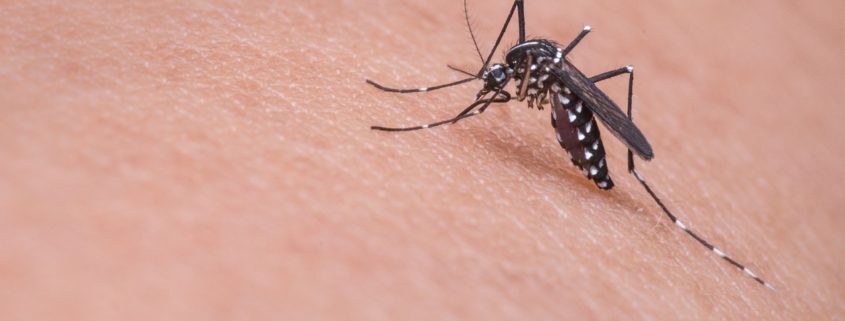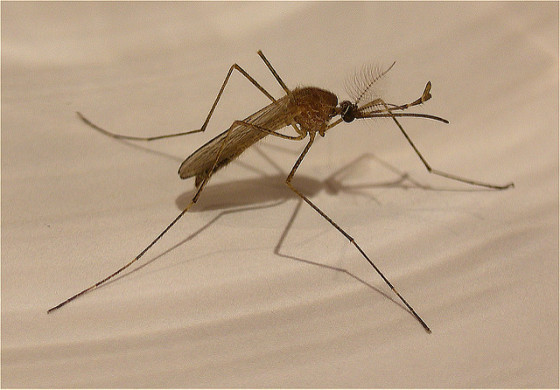The Latest on the Zika Virus: What You Need to Know if You’re Pregnant
You may have heard about the Zika virus in the news the past couple of years. It was originally discovered in Uganda and is now found in Central and South America. However, it’s spreading farther and farther north and can be extremely dangerous if contracted during pregnancy.
This post will discuss what exactly the Zika virus is, how women get it, what to do during pregnancy, and how to avoid the Zika virus.
Contents
What is the Zika virus?
A Zika outbreak started in Brazil in the middle of 2015 and has spread to much of the Caribbean, Central America, and South America. It is spread primarily through the bite of an infected mosquito, but also can be spread through sex with an infected person even if he or she doesn’t have symptoms.
Zika is a virus related to dengue fever, yellow fever, and West Nile virus. It’s transmitted by Aedes mosquitoes. Most people infected with the virus have only mild symptoms — fever, rashes, headaches, and muscle aches. These symptoms usually clear up within a few days.
There is no vaccine or cure for the disease, but it’s rarely serious enough to require medical attention. Recent evidence suggests that there may be a link between Zika and Guillain-Barre, a rare disease that causes paralysis, but there is no definitive link as of now and the Centers for Disease Control and Prevention (CDC) continues to research it.
Zika and Pregnancy Issues
The Zika virus is typically not life-threatening for healthy adults, but it does carry serious risks for pregnant women. Children born to women infected with the disease have a much higher risk of microcephaly, a serious and sometimes fatal medical condition, in addition to other severe brain defects.
What is microcephaly?
Microcephaly is a medical condition that causes the child to have an unusually small head. It’s the result of abnormal brain development or growth in the womb or just after birth. It has many potential causes, both genetic and environmental. For example, it may be caused by genetic mutations, maternal infections during pregnancy, and maternal alcohol abuse during pregnancy. It may develop on its own or in conjunction with other birth defects.
Mild cases may have no symptoms other than an unusually small head, but more serious cases can cause developmental delays, seizure disorders, facial distortions, coordination problems, and mental retardation. Children with this condition may benefit from speech, physical, and occupational therapy to improve their ability to communicate and perform daily tasks. Children with serious cases of microcephaly may require lifelong care.
There is no cure for microcephaly, so treatment focuses on improving the child’s functional skills.
Zika Symptoms and Microcephaly Link
In August 2017, researchers found a conclusive link to prove that Zika infections can cause microcephaly, called congenital Zika syndrome. First, the number of cases of microcephaly in Brazil jumped in conjunction with the Zika outbreak that started in 2015. Many of the mothers reported having a rash early in their pregnancy — a common symptom of Zika.
Second, microcephalic babies born to mothers who were infected with Zika tend to have certain unique characteristics, including unusually stiff upper body and neck muscles, that aren’t found in babies with microcephaly that isn’t linked to Zika. There have also been several confirmed cases where the virus was found in the amniotic fluid of women who had given birth to microcephalic babies.
The features of congenital Zika syndrome, unique to fetuses and infants infected prior to birth, are as follows:
- Severe microcephaly (partial skull collapse)
- Decreased brain tissue and specific brain damage pattern, including subcortical calcifications
- Macular scarring, focal pigmentary retinal mottling, and other damage to the back of the eye
- Congenital contractures (clubfoot, arthrogryposis)
- Hypertonia, restricting body movement of a newborn; similar condition as to what’s found with cerebral palsy
Outcomes of pregnancy reported to date in the United States show 1,810 completed pregnancies with or without birth defects after evidence of a possible Zika infection in those cases. Of those pregnancies, 93 children were born with birth defects and an additional eight with birth defects were a pregnancy loss.
However, the CDC does not know how likely your pregnancy will be affected by a Zika infection or if your baby will have birth defects, in addition to if there is any safe time to travel to an area that has seen the Zika virus.
Am I at risk? Is the Zika virus treatable?
The specter of microcephaly is a scary one. It’s not treatable and it’s not possible to guess what sort of outcome your child will have. The good news is that the link between the Zika virus and microcephaly seems to be limited to women who get infected while they’re pregnant.
For that reason, local authorities in the areas currently affected by the outbreak are recommending that women delay getting pregnant until the outbreak is under control. That’s a difficult task — the mosquito population is notoriously difficult to manage. Mosquitoes breed in standing water, such as puddles, ponds, and rain barrels. Much of the rural population in the affected areas does not have access to running water, so they have to keep standing water around for drinking, cooking, and cleaning.
For now, the outbreak is mostly limited to the Caribbean, Central America, and South America. However, it is continuing to spread north and authorities expect it to make its way across the United States.
The first case of Zika virus in the U.S. cropped up in 2016 in Dallas. In that case, the disease was sexually transmitted rather than mosquito-transmitted. Shortly after, two U.S. women who contracted Zika while traveling abroad miscarried — the virus was found in their placentas.
So far, more than 2,100 cases of possible Zika infection have been reported in pregnant women in the U.S. Mosquito-borne Zika virus infections have been discovered in Brownsville, Texas, and Miami-Dade County, Florida.
See also: Signs of a Miscarriage and What to Do After
How can my baby and I stay safe from the Zika virus?
If you’re pregnant, authorities recommend that you do not travel to the areas affected by the outbreak. The CDC keeps a list of areas where the virus is currently spreading. If you cannot postpone your trip, you should take extra precautions to avoid mosquito bites. That includes wearing long sleeves and pants, using insect repellent, and sleeping in a screened-in or air-conditioned room.
While some mosquitoes are active only around dawn and dusk, the Aedes mosquitoes that transmit the Zika virus are active all day long. In addition, you should avoid sexual contact with people who may have been infected, as the disease can be transmitted sexually. Zika, however, has not been shown to be transmitted through breastfeeding, so the CDC encourages mothers to continue breastfeeding even in areas where Zika has been reported.
If you develop symptoms such as a rash, headache, or fever, you should consult your doctor immediately. Be sure to tell your doctor if you’ve traveled to an outbreak-affected area — you may need tests to determine whether you’ve been infected with Zika or another related disease. If so, your doctor may order extra testing and monitoring to determine whether your little one has been affected.
See also:









I would be curious to know if these mothers that have supposedly contracted this zika virus & had a child born with microcephaly if they had received any “vaccinations” such as the flu vaccine or the tdap vaccine while pregnant???
I received both of those vaccinations while pregnant and my baby does not have microcephaly.